Quilters are known for being resourceful and I have noticed many things designed for other uses being hijacked for use in quilting, and to prove it, I’ve decided to share six of my favorites with you.
Some are because they are just really great for the purpose, but some are because they are cheaper, and hey, we can all use more money to spend on fabric, can’t we?
1. Freezer Paper:
Originally used before plastic bags were invented for wrapping food to put in the freezer, or for layering between frozen goods to keep portions separate.
Now we find it the perfect paper for cutting shapes for needleturn appliqué, and for cutting parts of small, one-off pieced blocks (e.g. in a “Dear Jane” quilt).
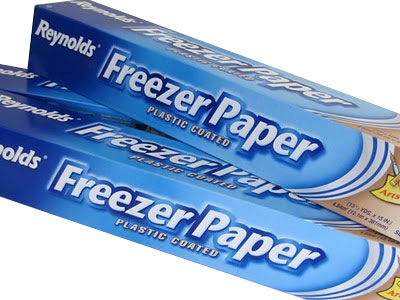 The paper is waxy on one side so trace the designs onto the other side and cut out; place the waxy side against the fabric and iron it and it forms a temporary bond with the fabric. Fabric can then be cut out with a seam allowance added. Shapes can be peeled off and re-used several times.
The paper is waxy on one side so trace the designs onto the other side and cut out; place the waxy side against the fabric and iron it and it forms a temporary bond with the fabric. Fabric can then be cut out with a seam allowance added. Shapes can be peeled off and re-used several times.
In America it can be bought at supermarkets, but in Australia it is generally only available in patchwork shops.
2. Baking Paper:
We all know this is what stops the cookies sticking to the tray. But it also stops all those lovely fusible products from sticking to the iron.
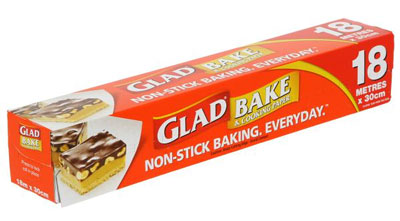 When using fusible webbing (e.g. Vliesofix, Steam-a-seam etc) for appliqué, or an iron-on stabilizer (Vilene, Pellon, Parlan etc) you can put a piece of Baking Paper on your ironing board to stop it sticking to the board, and another piece on top before you iron, and your iron will stay clean as well.
When using fusible webbing (e.g. Vliesofix, Steam-a-seam etc) for appliqué, or an iron-on stabilizer (Vilene, Pellon, Parlan etc) you can put a piece of Baking Paper on your ironing board to stop it sticking to the board, and another piece on top before you iron, and your iron will stay clean as well.
You can also assemble an appliqué, ironing it onto the baking paper piece by piece, and then peel off the baking paper and iron the entire appliqué onto the background at once.
3. Bicycle Clips:
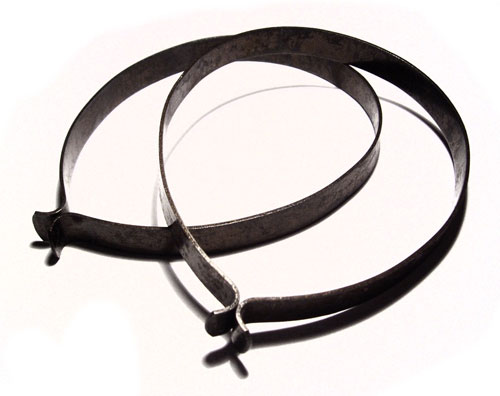
Quilting with a domestic sewing machine can sometimes be a challenge.
Quilters have discovered one way to control the large area of quilt is to roll it and slip a few bicycle clips (the sort cyclists used to use to keep their flappy trouser legs from getting caught in the chain) over the roll.
This will stop it unrolling, but it is still easy to slip the clip around and unroll it as you go.
4. Snap Hair Clips:
These are the ones little girls wear in their hair all the time, except they don’t need the little flowers and bows and other decorations on them.
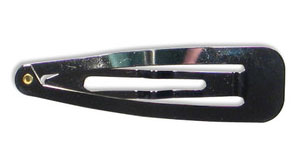 They are great for holding down the binding around the edge of the quilt, first as you sew it on, and then as you fold it over and sew it down later. Less pin-pricks in the fingers, and no dropped pins to find later!
They are great for holding down the binding around the edge of the quilt, first as you sew it on, and then as you fold it over and sew it down later. Less pin-pricks in the fingers, and no dropped pins to find later!
5. Gardening gloves:
Yes I know you can buy special quilting gloves with grippy bits on the fingers, but I have found I can buy almost the exact same thing in the gardening department at half the price!
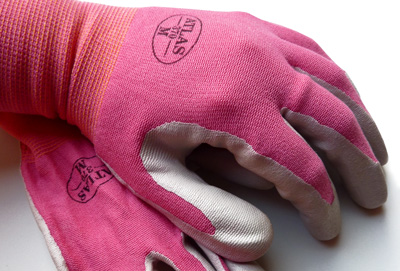 My favorites are the ones which are made of lycra so they fit nice and tight and they “breathe”, but they look as though the whole palm of the hand and fingers have been dipped in latex, which gives a super grippy finish.
My favorites are the ones which are made of lycra so they fit nice and tight and they “breathe”, but they look as though the whole palm of the hand and fingers have been dipped in latex, which gives a super grippy finish.
I can get them in my favorite color (Pink), there is much less strain on my wrists and fingers and I can quilt for longer!
6. Templates:
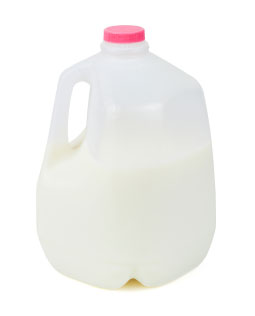 Our Grandmothers used cardboard, and we use template plastic, but have you thought of looking around for less expensive options?
Our Grandmothers used cardboard, and we use template plastic, but have you thought of looking around for less expensive options?
Milk and juice often comes in straight-sided bottles which are transparent or semi-transparent, which are great for cutting small templates from.
Old X-Rays are also good for templates. And I’m sure we have all used bowls, lids and coffee cups for drawing circles!
I’m sure you could think of some other options too.
I would love to know what you use for quilting which was meant for something else.
Happy Quilting!
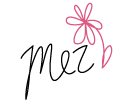
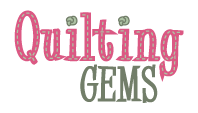
189 Responses
I have organized all my buttons by colour using spice bottles on a revolving rack, which I bought on clearance at Winners/Marshalls.
I am a hand quilter and have used rubber finger tips to help pull needle through fabric.
Extending magnetic wand for retrieving small metal objects that mechanics use is very handy in the quilters toolbox for picking up pins and safety pins off the floor, or in hard to get to places!
Save those flat magnets that come with junk mail. Place it magnet side up for keeping needles from rolling off the table
I have a 60″ sewing tape measure with increments printed on it taped to my cutting table. I also have some other tape placed at either end for extra long measurements. It has really saved me lots of time when measuring fabrics. I used clear packing tape to cover the tape measures & it works nicely. It hold down the tape & keeps it clean.
Great tips and cost saving info. Thank you
My first quilting teacher recommended using a thick rubber band (comes wrapped on celery stock, or popped balloon) for pulling out a stubborn needle while hand quilting. Also cutting off finger tips of old worn leather gardening gloves to use as a thimble while hand quilting.
I always have 1 gallon ziplock bags for leftovers, but also occasionally buy the 2 gallon size (at Stater Brothers market). I use the bags for completed blocks sewn, also the larger ones for taking already purchased fabric with me to quilting stores when brainstorming additional coordinating fabrics for that project. The 2 gallon size is also great to take in my luggage for dirty clothes when vacationing.
I pick up paint samples that match bits of fabric for quilting projects. I cut them proportionately, and arrange them to distribute colors (randomly), especially for commissioned projects. Then I save the arrangement with my phone/camera. This allows the customer input about color and balance.
For hand quilting, to give my fingers a break, I use a small pair of pliers to pull the needle through .
Vodka. The cheapest potato vodka you can find (who knew they make vodka from other grains?) mixed with water makes a great spray starch alternative that doesn’t attract silverfish or other insects. I use 2-4 ounces of vodka to 8 ounces of water.
I use a nut pick as a stylus and also to pick out stitches.
My hair straightener for pressing seams. Saves me getting up and down to get to the iron!
I love the economical and thirfy uses everyone has shared. I make templates out of the plastic place matts you can buy at the Dollar Tree. Works great for me and cheap!
I’m in the middle of making Dresden Plates and found the perfect circles for the center were canning jar lids. Right now I’m using the large one and my small rotary cutter goes around it perfect.
I use an empty balloon to pull needle through fabric.
Like Diane, I have a paper measuring tape from Ikea, but taped to the front of my sewing machine table. I used packaging tape so the whole measuring tape is protected from wear and tear. Like minds!
I also have a pretty hat pin in my pincushion that I use when piecing, to help seams lay in the right direction. Keeps my fingers away from the foot and the needle!
I use small and medium binder clips to keep my binding in place when I hand stitch it on my quilts.
I use the suction handle meant for assistance to get in and out of the bathtub on my big acrylic rulers. The handle is good for gripping and holds down the whole ruler with much less pressure.
I use hairspray to spray the end of the thread before I thread my sewing machine. And I use hairspray to spray chalk markings. These weren’t my idea, BTW, I saw them on the Internet.
I use Washaway Wonder Tape to anchor the first chunk in place when I paperpiece. It does not distort the paper and fabric like pins do.
School glue, watered down makes tiny piecing easier and is stiffer than startch. Iron using teflon grill sheets.
I have lost strength in my hands & arms. Outside I found a reg. brick, cleaned & covered it in with foil. Then I took duck tape & made a handle, for better move ability. I use it to help me hold down my long rulers, I done another to place on my small pieces after ironing.
When I’m quilting I use a portable others rack. I hang the fabric on hangers and clip with potato chip clips. Keeps the drag and weight fromm pulling. Sure save my arms from getting so tired!
Hi, after reading this awesome post i am as well happy to
share my know-how here with friends.
~I use the wooden chop-sticks for a Stiletto.
~I buy the clear plastic mats for food chopping from Dollar Tree (2 for $1.00) to make my patterns/templates.
~For larger patterns, I use old news papers.
~I use jar lids (different sizes) when cutting circles when making yo-yo’s.
~When I buy those LARGE sheet cakes, they usually come w/nice heavy clear plastic cover,,I use them for my quilt pieces or and my blocks. ~AND those large pizza box’s are good for storing quilt blocks.
I am a retired RN and I use a Kelly Clamp,/Hemostat for pulling needles ,for pulling fabric through tight spaces.
I sometimes use use a hemostat when hand quilting to grasp the needle.
Don’t forget that used pill bottles are great for broken needles and pin disposal
Beryl I use a birds feather to clean the hard to reach places in my sewing machine .after all feather dusters were used long before all of these micro dusters
I iron fabric into freezer paper and print pictures on it for quilts. It works amazing.
Does anyone have a trick for removing pencil marks from light fabric?
When trying to decide on which fabric is medium, which is dark etc., take a picture with your phone; change it to black and white, and you’ll immediately see the difference in shades.
I use the empty swifter wet cloth trays with lids for storing scrappy strips & squares.
Good write-up. I certainly love this website. Keep
it up!
Through this article people will get the complete information that they must consider while quilting and also wearing gloves is very important for people while machine quilting.
I loved this article very much because this article completely helped me to understand the special features and usage of quilting gloves for all of us. Thanks for sharing such an informative article with us.
Being a quilting professional I would like to say, after reading this article I have solved all my doubts that I had regarding the machine quilting. We also agree with the thoughts of the writer mentioned in this article. Thank you.
I use woodworking spring loaded clamps bought at Harbor Frieght for a couple bucks apiece to stretch my quilt, batting and backing. They come in 3 sizes and the rubber tips don’t mark my table or my counter tops.